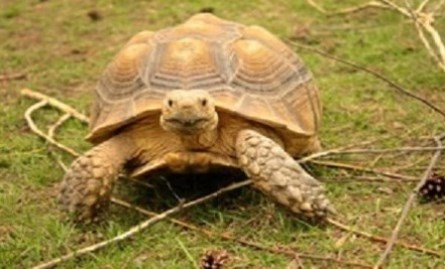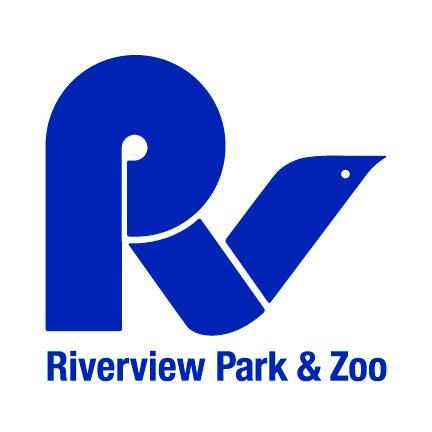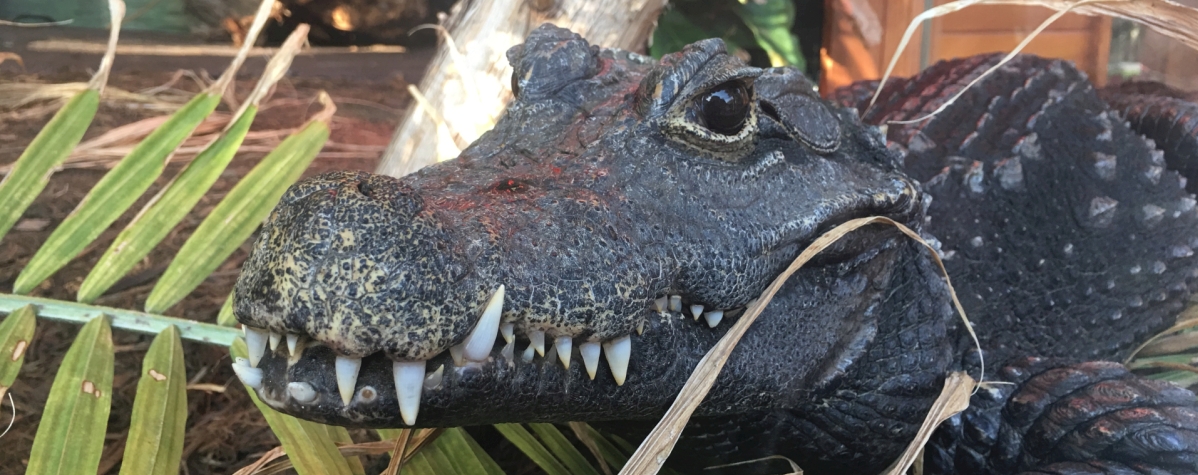African Spurred Tortoise
Scientific Classification 
| Species |
Terrapene carolina carolina |
| Kingdom | Animalia |
| Phylum | Chordata |
| Class | Reptilia |
| Order | Testudines |
| Family | Testudinidae |
| IUCN Status | Vulnerable |
Appearance and lifespan
The African spurred tortoise, is also known as the Sulcata Tortoise. This particular tortoise is light brown in colour with an oval shell. Weighing up to 36-90kg (80-200 pounds), the African spurred tortoise is the third largest species of tortoise in the world, and the largest continental species, following the Aldabra and Galapagos giant tortoises. Their name refers to the many spur-shaped scales on the front of their forearms, which they use for protection and to dig burrows underground. Adults grow up to 45-76cm (18-30 inches) in length.
Wild African spurred tortoises can live up to 70 years, and in captivity live between 80 to 100 years.
Ecology and conservation
The African spurred tortoise is found in semi-arid scrublands and deserts across northern Africa. Tortoises are herbivores thus the sulcata tortoise has a diet that consists of fibrous grasses and other desert plants, weeds, flowers and cacti.
Tortoises and turtles are a very old group of species dating back to over 200 million years ago. Currently IUCN lists this species as vulnerable.
Threats
They are vulnerable to habitat loss, primarily caused by urbanization in their native range.
Behavior and reproduction
The African spurred tortoise reaches sexual maturity at around 15 years old and gestation occurs for about 60 days. Once eggs are laid they are incubated underground for up to 8 months. Clutch sizes are around 15-30 eggs. Once the egg hatches, baby tortoises are around 5-7cm (2-3 inches) in length and grow until they reach sexual maturity.
Mating season begins in July and the eggs typically hatch the following March. During this season, male African spurred tortoises are extremely aggressive and have been seen fighting, flipping each other over while being very vocal.
Did you know?
- Baby African spurred tortoises are very aggressive toward other individuals.
- African spurred tortoises are most active during evenings in the wild, they use the heat of the sun during the day to raise their body temperature so they can forage during cooler temperatures of the evening.
- This species typically digs out large underground burrows up to 3 metres deep that help them escape from extreme heat, cool weather and offer protection from predators.


